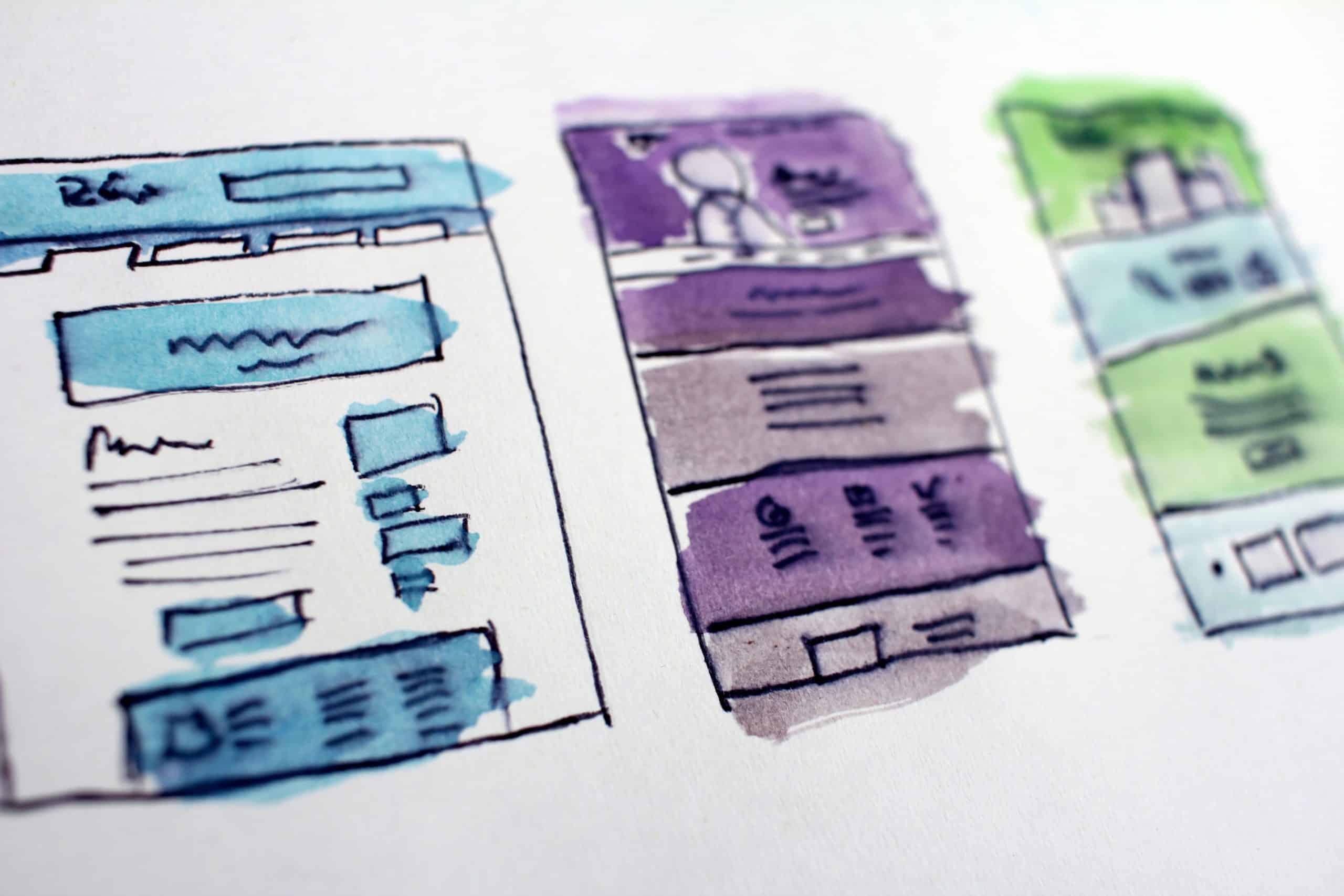[ Blogs – Everything you need to know before starting one – Digital Marketing Series – Part 2.1]

When I got my website up, I was very clear on two objectives:
- I wanted to have a portfolio website for all my art organized under one roof.
- I wanted my blogs to be a source of secondary income (still a WIP).
First objective led me to build on how I wanted my homepage to look, how I wanted to categorize different artworks across different pages, and the control to customize them as per my taste. The second objective led me to integrate a blog and run ads.
This ensured that running ads on my website is limited to a content-heavy area, and doesn’t spill to my online portfolio.
There is still room for improvement even when it was easier for me to design it, code it up, integrate a blog, measure traffic, provide ads from Google network and more! I have the skill-set to fix it the way I want, but for someone without a technical background, it is pretty confusing to figure out where to start.
This blog aims to solve just that.
In my previous blog in this series, I focused on an overall know-how of digital marketing with artists as an audience.
This blog is intended for anyone who wants to start a blog or a website but is confused with where to begin and what to choose from the options available.
I have tried to keep it focused on the needed thrust without going into the nuances of content marketing. That is for future posts.
I have also tried to cover as many popular platforms as possible, and since I have spent a considerable amount of time on most of them, I can give my two cents to guide you to pick the ones which serve your purpose.
This topic is split into 2 blog posts to avoid information overload. This blog gives you a sneak peek of parameters before you make a decision of getting a blog followed by the right platform for your blogging needs. Here they go:
Decision of getting a .com
Most bloggers often start with free blogging platforms like WordPress or Blogger. I did the same, and in August 2011, I made my first blog post – rambling about college and semester experiences under https://sangitaekka.blogspot.com which is not permanently deleted.
This is a good exercise to figure out the kind of content you will be uploading, and also to get familiar with the editor. An absolute beginner can play with the look and feel of the blog, tweak things, share it with family and friends, take their feedback, and improve.
Any free blog created with WordPress or Blogger adds up as a sub-domain, i.e. in the format of <your-blog-name>.blogspot.com or <your-blog-name>.wordpress.com.
It is often suitable if you write sparingly, or something personal, or if you do not have very ambitious plans with your writing.
However, getting a domain for your blog is a personal choice but choosing to do so would mean making periodic payments. Purchasing a domain and associated space requirements can amount to a minimum of 1K – 2K INR or more (>15-30 USD) annually, and non-payment of which may lead to permanent data deletion with some of the service providers. Ensure that you do have a backup of whatever you post online.
Picking the right platform
Once you have settled on the type of content you want to post, how frequently you want to post, and if at all you need a .com, the choice of the platform comes next. Let’s weigh your options.
Blogger vs WordPress.com
This is where everything is free.
Blogger’s beauty lies in the fact that it is linked to Google. A Gmail login is all you need once you create a Blogger account.
This platform is simple to use. Once in the dashboard, it immediately makes sense where the blog title and body are going to be, where to set theme, where the stats will be, where the earning data will be.
Since it is entirely owned by Google, features can be depreciated or added by Google only. It is simple but equipped enough to get your blog up and functioning.
WordPress.com is one of the most popular platforms for blogging. Though easy to set up, its dashboard will take some time to get used to.
Since it also powers websites, there are features to manage pages, tweak themes, add widgets, add plugins, and a lot more other than just creating blog posts.
WordPress’s power lies in its flexibility to incorporate third-party elements for themes, plugins, trackers and more, which are offered as free or paid.
Wix vs WordPress.org
This is where you pay.
Wix is a personal recommendation if you are going ahead with purchasing a domain/.com.
Designed to make it easy for non-coders to get their websites up, Wix as a product is extremely well done. First access to its dashboard may feel a little daunting as there is a lot going on, but once you start experimenting, it is pretty much drag and drop for even complex add-ons like dynamic Instagram feed, chat-bot integrations, and even equipped with a decent photo manipulator for blog posts.
This platform works best for businesses for its feature-rich offering, and at the same time works great for blog-only websites with enormous design options to choose from and tweak.
WordPress.org is different from WordPress.com discussed above, and this difference is well explained here. WordPress.org gives a plugin that can be integrated with a pre-hosted domain.
In simpler words and with an example, my website – www.sangitaekka.com is hosted in Hostgator where I code and place all the pages of my website. But for the blog, I used WordPress.org plugin which integrated my blog with the main domain and with dashboard access for making blog posts.
This dashboard is the same as what free WordPress bloggers get, but some tweaking and updates get technical here. It works best if you have someone who codes. and can maintain your site on a long-term basis.
Medium vs Ghost.org
This is a mixed bag.
Medium is strongly driven by a community of avid readers and writers. For anyone who just wants to read and write, and doesn’t want to get into domain-based decision making, Medium is a strong pick.
Available both for free and paid versions, what to post on this platform can be a little tricky. You can choose to post what you feel like, or you can choose your best works and post. Choosing to do the latter, you must have a backup of your work elsewhere.
Do note that a free Medium account has a cap on how many posts you can read and how many stories you can post. Membership at 50 USD annually is pretty economical given it removes the cap on reading and writing. Also, the audience here is mature with their posts, and hence the articles are pretty ripe.
Ghost.org is often marketed as an alternative for WordPress and Medium, and for good reasons. It is an open source and the most tech-stack-heavy alternative so far.
This platform with “Fiercely independent, professional publishing” is not built for pet stories. Pricey in comparison to Medium, Ghost offers a plethora of integrations for content distribution, communications, newsletters, social media and more!
This platform is new for me and though still on trial, I am pretty much convinced to try its subscription model for a few months to see the promising results in terms of reach. It would be smart to have some serious articles in store before investing here.
And that concludes everything you need to know about blogs. We covered the pros and cons of owning a domain and of various platforms. I hope this wasn’t a lot to digest and guided you to make your decision.
In the next post, I will talk about monetizing options from blogging and a few tips on the overall look and feel by using the right media! Stay tuned!
Older posts in Digital Marketing series
https://blog.sangitaekka.com/digital-marketing-for-artists-digital-marketing-series-part-1/
